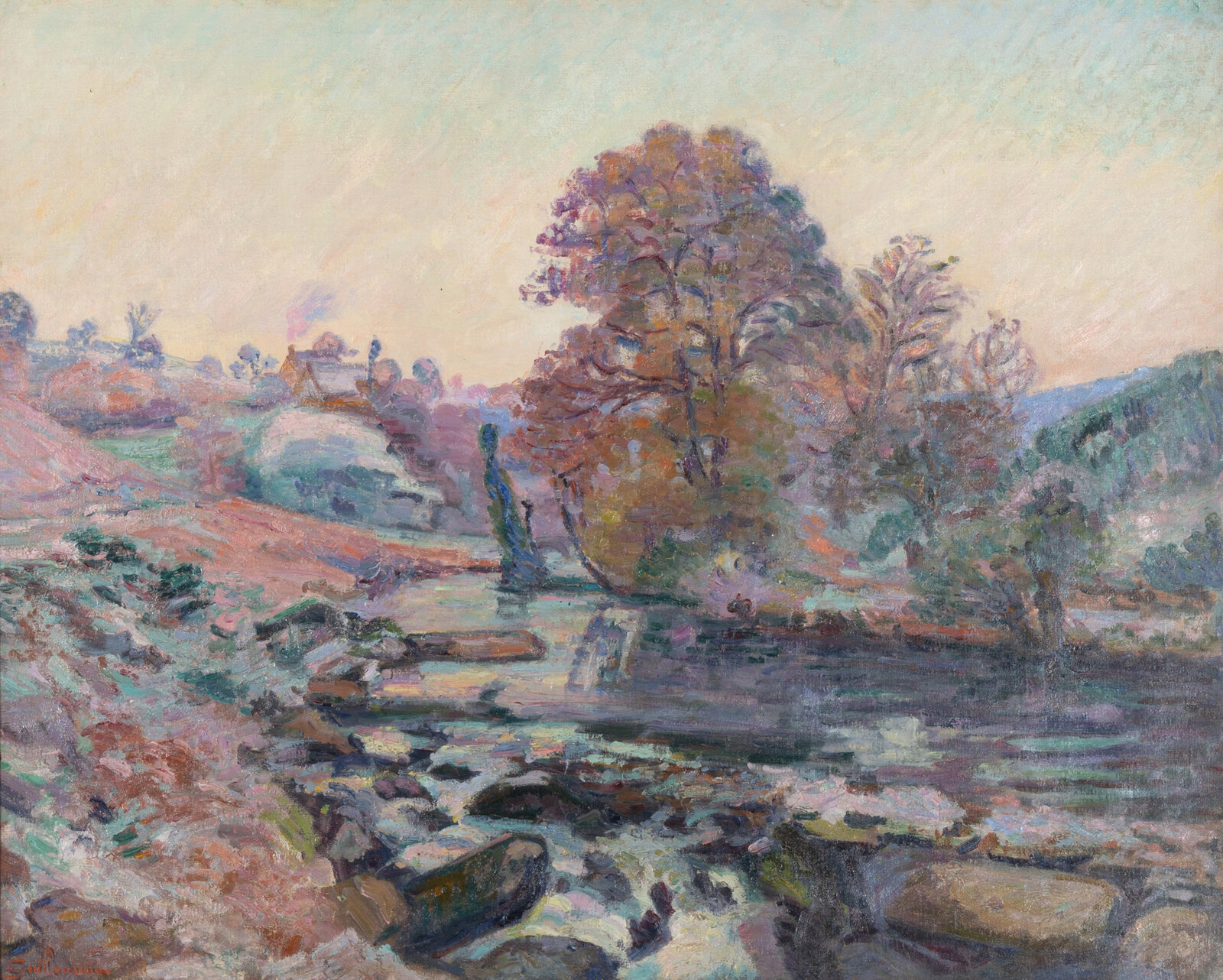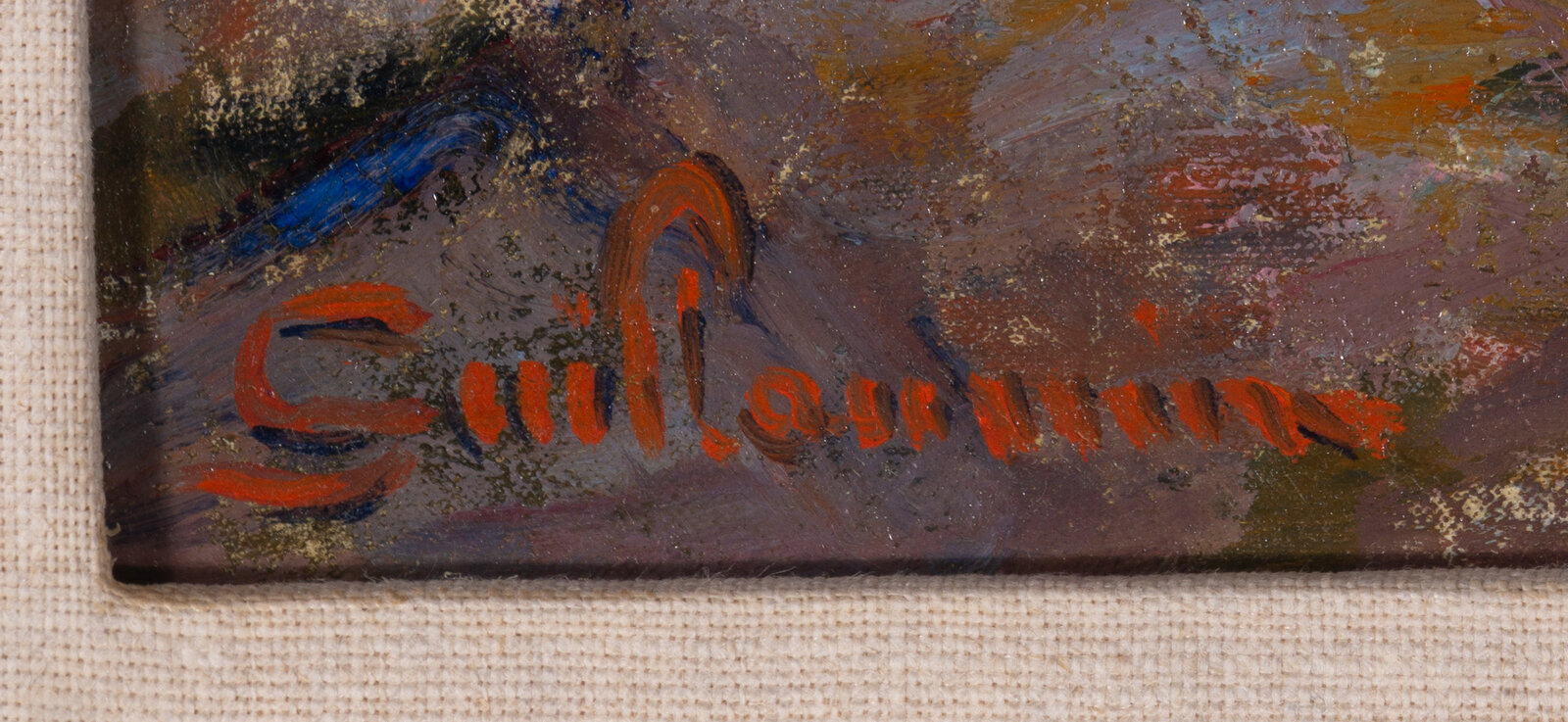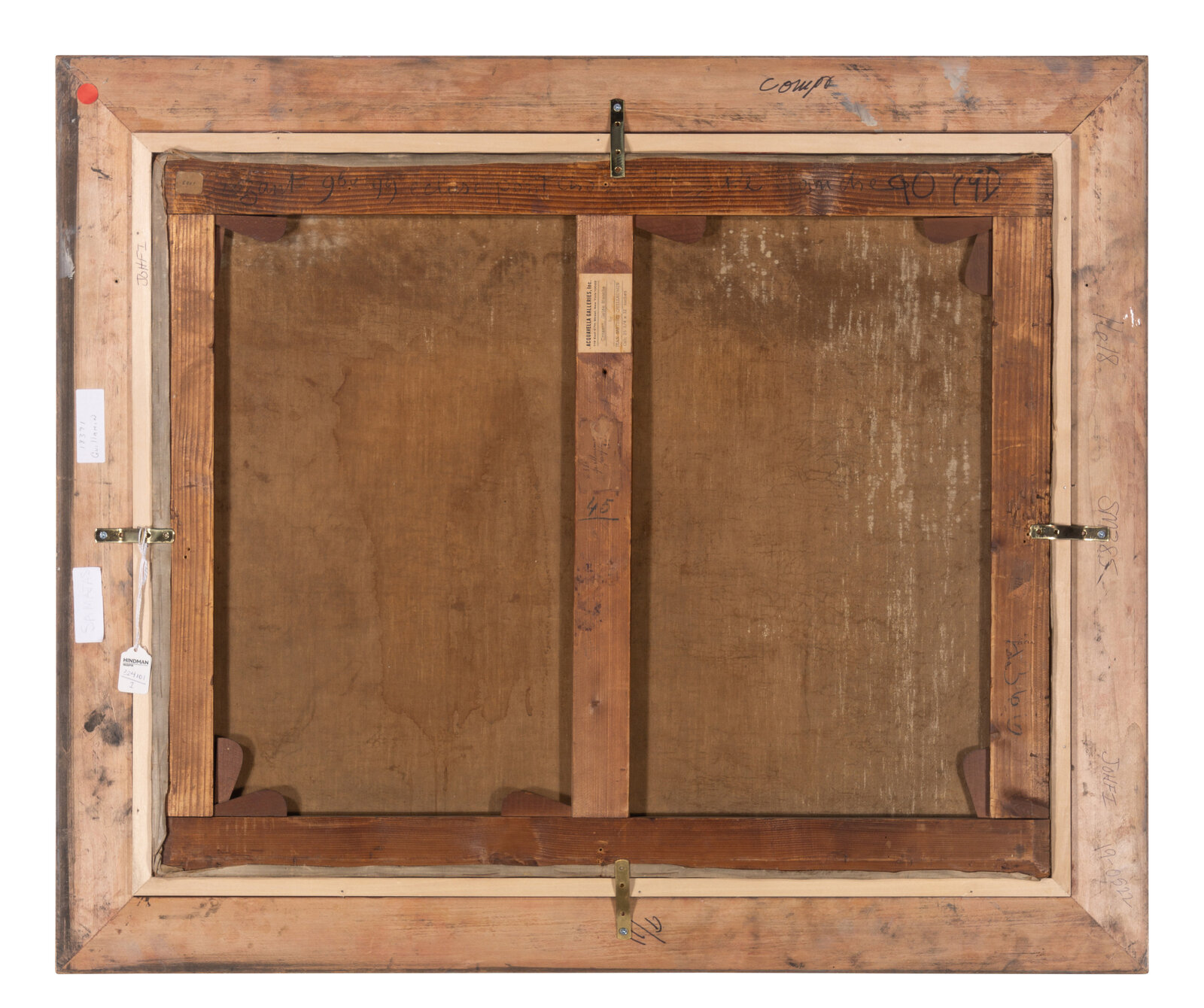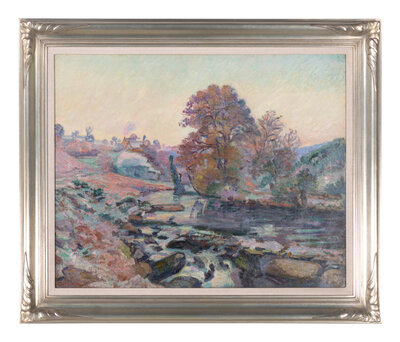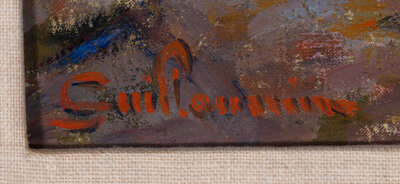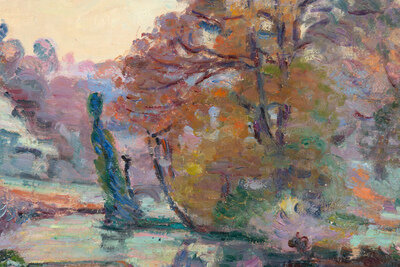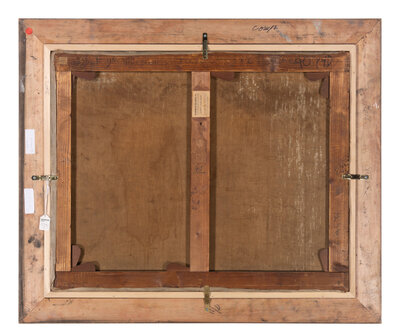Armand Guillaumin
(French, 1841–1927)
Gelée blanche à Crozant, écluse de Bouchardon, c. 1895
Sale 1297 - European Art
May 16, 2024
10:00AM CT
Live / Chicago
Estimate
$20,000 -
$30,000
Sold for $31,750
Sold prices are inclusive of Buyer’s Premium
Lot Description
Armand Guillaumin
(French, 1841–1927)
Gelée blanche à Crozant, écluse de Bouchardon, c. 1895
oil on canvas
signed Guillaumin (lower left)
25 5/8 x 32 inches.
This lot is located in Chicago.
Provenance:
Acquavella Gallery, New York
Sold: Sotheby's, New York, May 12, 1999, Lot 496
R.S. Johnson Fine Art, Chicago
Private Collection, acquired from the above
Exhibited:
Chicago, R.S. Johnson Fine Art, Traditions and Reflections: A Selection of works from England, France, Germany, Hungary, Italy, Spain, and Switzerland, Fall 2019, no. 2, pp. 12-13
Literature:
Georges Serret and Dominique Fabiani, Armand Guillamin, Catalogue Raisonné de l'Oeuvre Peint, Paris, 1971, no. 352, illus.
Lot note:
Gelée blanche à Crozant, écluse de Bouchardon, c. 1895, was painted in Crozant, located in the Creuse region, central France, and a subject that Armand Guillaumin revisited in his oils on numerous occasions. As in the present work, many of the Crozant paintings feature the dam associated with the Bouchardon mill, located along the Creuse River. Guillaumin was a leader of the École de Crozant, a loose group of artists who depicted landscapes in the Creuse region. More importantly, he was also a founding member of the Impressionist movement, painting alongside Paul Cézanne, Camille Pissarro, and Pierre-Auguste Renoir among others.
Guillaumin's path to becoming an artist was far from ordinary. His interest began at a young age while living in Moulins, but from the time he moved to Paris in 1857 until 1891, he had to put work before painting in order to earn a living. His jobs ranged from being a clerk in his uncle's lingerie shop, to working for the Paris-Orléans railroad, to taking evening shifts digging for the Highway Department. Despite the hard work, he painted throughout and exhibited at the Salon des Refusés in 1863, along with a group of artists soon to be dubbed the "Impressionists" and participated in six of the eight Impressionist group shows. Guillaumin was also a close friend of Vincent van Gogh, with whom he had in common paintings featuring bold coloration combined with painterly brushwork, as in the present lot.
In 1891, Guillaumin was finally able to quit his day job and concentrate on painting full-time when he won 100,000 francs in the state lottery. This money allowed him to settle permanently in the Creuse region. Much like Claude Monet, who likewise painted in the area, Guillaumin often painted in the same locale, in different atmospheric conditions and at different times of day. In the present painting, the view shows only the dam along the river in the foreground, with the Bouchardon mill unseen to the right. Other examples of the same scene but from varying perspectives include The Bouchardon Mill, Crozant, c. 1898 (Metropolitan Museum of Art, New York) and The Bouchardon Mill, Crozant, c. 1894 (Philadelphia Museum of Art). In Gelée blanche à Crozant, écluse de Bouchardon, the frosty environment is conveyed through the brilliant pinks, violets, and oranges laid down with thick, energetic brushstrokes.
What remained consistent through Guillaumin’s landscapes in Crozant is the almost complete lack of any human life and presence, as if the landscape was enough, contrary to his earlier cityscapes. Similar to Monet, Guillaumin was equally fascinated by the region, as it represented to both of them the purest form of Nature, an area where modernity, progress, and industrialization had not yet invaded. The landscape offered dramatic, isolated views in which the artist could paint transcendental depictions of nature through expressive use of contrasting colors and gestural brushwork. The works, including the present painting, produced by Guillaumin in the late 1890s would go on to considerably influence the forthcoming Post-Impressionist artists. His evolving technique, from the early realistic period to his Impressionist approach, placed him as a key figure in the development of early 20th century painting.
Condition Report
The physical condition of lots in our auctions can vary due to
age, normal wear and tear, previous damage, and
restoration/repair. All lots are sold "AS IS," in the condition
they are in at the time of the auction, and we and the seller make
no representation or warranty and assume no liability of any kind
as to a lot's condition. Any reference to condition in a catalogue
description or a condition report shall not amount to a full
accounting of condition. Condition reports prepared by Hindman
staff are provided as a convenience and may be requested from the
Department prior to bidding.
The absence of a posted condition report on the Hindman website or
in our catalogues should not be interpreted as commentary on an
item's condition. Prospective buyers are responsible for
inspecting a lot or sending their agent or conservator to inspect
the lot on their behalf, and for ensuring that they have
requested, received and understood any condition report provided
by Hindman.
Please email fineart@hindmanauctions.com for any additional information or questions you may have regarding this lot.
